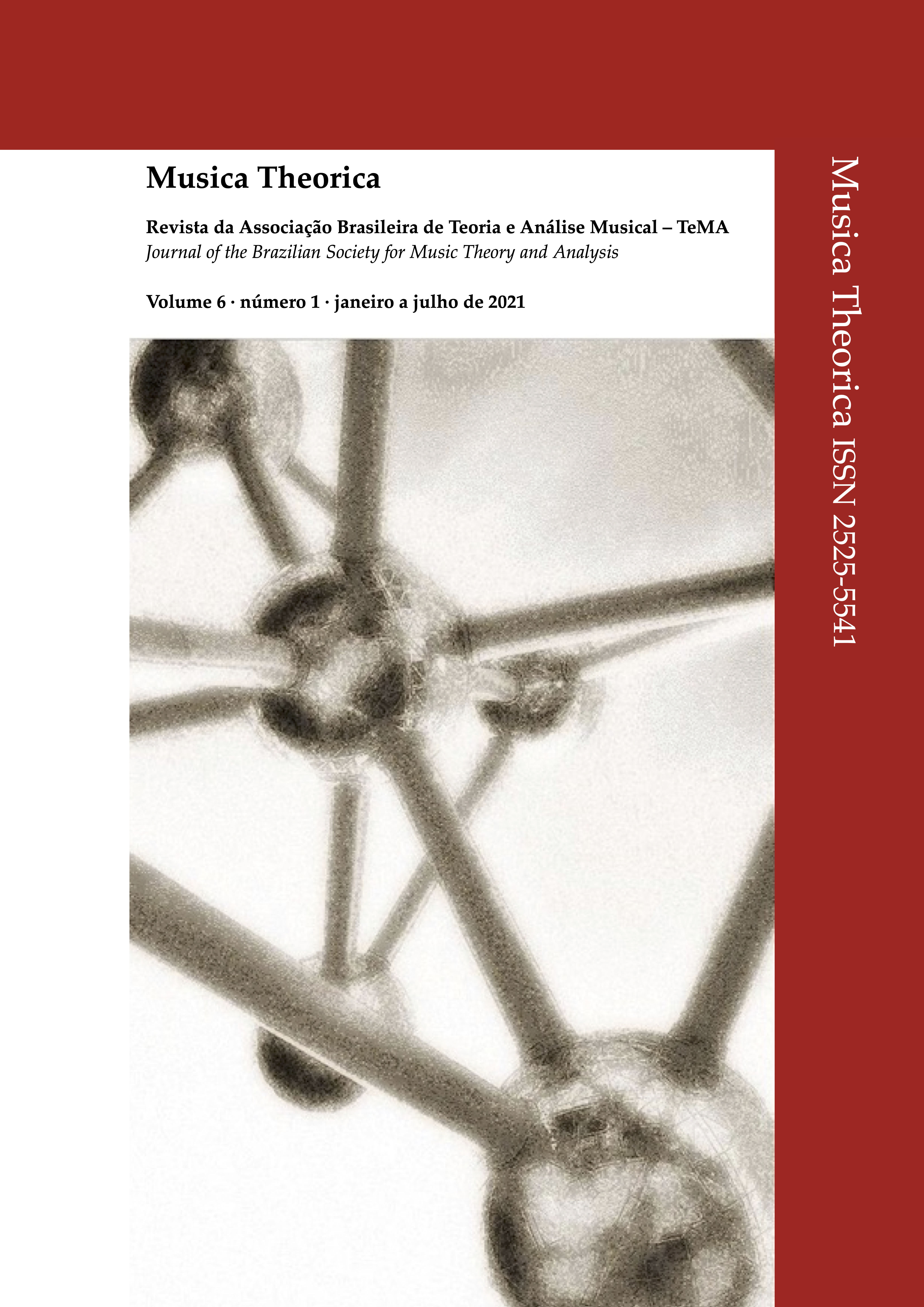Technical, Aesthetic, and Compositional Aspects in Graphein by Raphael Cendo
DOI:
https://doi.org/10.52930/mt.v6i1.181Abstract
Among the aesthetic currents of concert music that emerged at the beginning of the 21st century, Saturism stands out for proposing new models of organizating the sound material and for continuing the research on sounds that had been developing in traditional written music since the years of 1960. In this article, we will seek to understand the technical resources and aesthetic precepts that support the work Graphein by Raphael Cendo, one of the main composers of this aesthetic current. To this end, in the first part of the article, we will historically contextualize the emergence of Saturism; in the second, we will expose the main concepts and techniques developed in Saturism; and finally, we will present a proposal to analyze the organizational forces that determine the development of Graphein. The methodology used in the analysis consisted of deepening the conceptual ideas and compositional tools of Saturism through the reading of texts and transcription of interviews; score analysis; analysis of the phonogram – based on the aural analysis concepts, proposed by Lasse Thoresen –; and analysis of the phonogram using audio descriptors.
Downloads
Published
2021-12-16 — Updated on 2021-12-16
Versions
- 2021-12-16 (2)
- 2021-12-16 (1)
Issue
Section
Artigos


